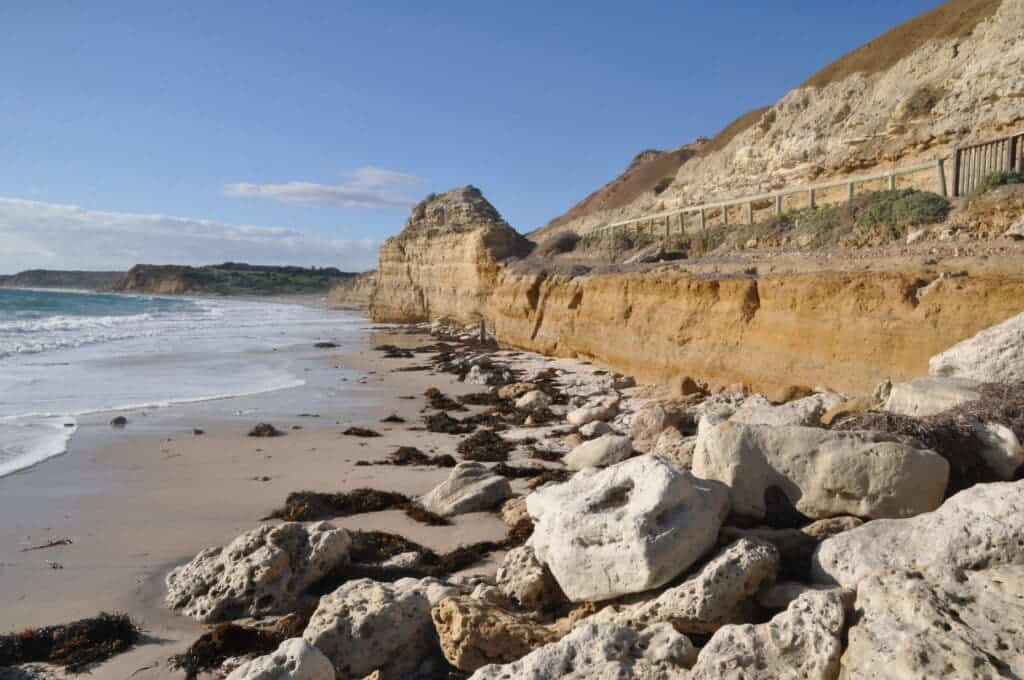Filled with fossils and traces of glacial activity, the Hallett Cove Conservation Park in Australia is one of the best-known geological sites in the land down under. Now, thanks to virtual reality technology, visitors from around the world can explore its fossilized landscape in a new gamified VR experience.

The project, “Beyond the Ice,” was developed by the University of South Australia’s Project LIVE team in partnership with Framework VR and the Australian Institute of Mining and Metallurgy (AusIMM). It aims to reveal, in spectacular 3D detail, the hidden stories behind Hallett cove.
Accessible through a VR headset, the online experience lets you visit 17 different geological sites of Hallett Cove. It uses 3D models obtained created with data from drone surveys, 360-degree panoramas, and “walk-through” footage that helps identify fossils, draw outlines of rock folds, and measure glacial grooves.
Beyond the Ice is freely available online and can be used from anywhere in the world, which might come handy with tourism being limited due to the coronavirus pandemic. The users are guided by a virtual robot and can do quizzes, collect 3D pet rocks, and even uncover hidden Easter eggs.
“Unlike many VR experiences, this is a lot more than some pretty pictures and 3D models thrown together that don’t really offer much as a learning exercise. It was designed as an interactive, gamified experience that engages people in science by challenging them to unlock the geological secrets of Hallett Cove,” Tom Raimondo, project leader, said in a press release.
Leaving aside its broad novelty and appeal, the project also offers important educational aspects, particularly as an authentic supplement to fieldwork. Raimondo said that through this virtual reality tour students can repeat, reflect, on and extend their field skills across different locations.
Preserved by nature in an ancient valley for hundreds of millions of years, the landscape at Hallett Cove paints an incredible picture of Australia’s past, including an ice age at the South Pole, the rise of the Mt Lofty Ranges, and the breakup of the supercontinent Gondwana.
More than 1,700 Aboriginal artifacts have been found on Hallett Cove. Its outstanding glacial pavements along the northern cliff tops are recognized as the best record of Permian glaciation in Australia and have international significance. The area is a popular tourist destination in Australia.
“Not only does virtual reality provide a flexible way to engage the next generation of science students, it also lets us adapt the program to suit different audiences, different skill levels and different field locations, so it’s a really fantastic step forward in online and immersive learning,” said Raimondo.


